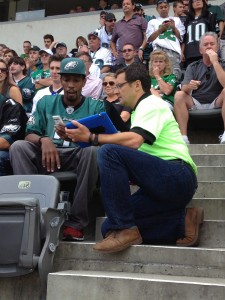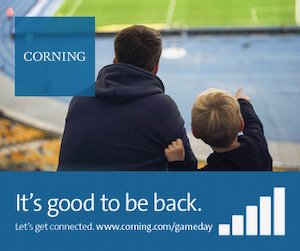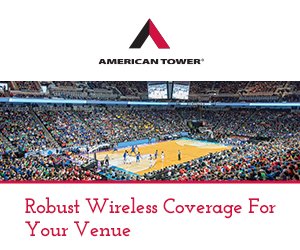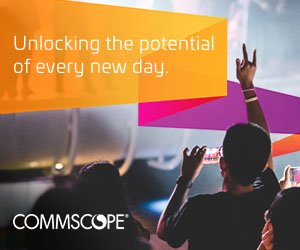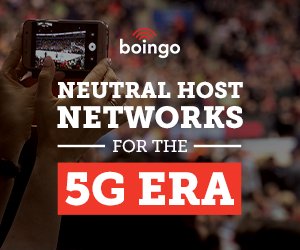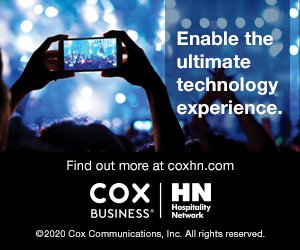When it comes to using technology, the NFL talks a really good game — but when it comes to decisions and deployments, the shield moves slower than a 3-yard cloud of dust. And it’s frustrating fans, who are looking for something along the lines of a run-and-shoot.
This week’s announcement of an agreement with Extreme Networks under which the technology company became the “official supplier of Wi-Fi analytics” is a good example of the NFL’s go-slow philosophy. While the deal is a small feather for Extreme and validation of its stadium Wi-Fi smarts, in the end it really doesn’t move many needles since it’s not a binding deal (meaning teams don’t have to use Extreme gear if they don’t want to) and also since many NFL stadiums don’t yet have fan-facing Wi-Fi. So while the NFL uses press events around such announcements to talk grandly of techno-fan engagement, what it really should be doing is spending some of its hoard of cash to help teams install super-fast networks in stadiums right now, instead of waiting for teams to do so on their own.
I get it that the networks are an asset for stadium owners, and in the long run they will want to reap the full benefits of their costs of deployment. And it’s hard to say there are things the NFL could be doing better, since the sport enjoys immense popularity for both its live and televised offerings. But nothing lasts forever. And if the NFL wants to keep justifying its hundreds-of-dollars ticket prices, it should offer its fans a game-day experience like no other — which should include super-fast, aka “gigabit” Wi-Fi. Fast Wi-Fi that connects instantly, and lets fans share photos, videos and more while at the game.
How much would that cost? Several million dollars to 10 million dollars per team? Even at the high end, it’s not like the league doesn’t have that kind of money to toss around. It does. Just its cellphone live-action rights contract alone — $1 billion from Verizon over 4 years — is enough to cover league-wide Wi-Fi deployments and more. And once those networks are in place, the NFL would be supremely set up to control and benefit from the possible coming explosion of in-stadium mobile device use. An explosion which could be even bigger if the NFL takes another radical step to open up its content and information to third-party developers.
Team apps are losing the battle
Right now whenever a stadium network is launched there is usually a grand accompanying plan for a “team app,” which promises just about everything a fan could possibly want, in the team’s eyes. The problem with these apps — which so far are largely being ignored — is that they are all developed from a team’s perspective, not a fan’s. My biggest complaint with most of the team apps (and this goes for other events and sports media channels as well) is that they try to do too much, and instead of being helpful are just a pain in the butt to use, with too much information and too many choices and constipated navigation.
I haven’t been to that many games lately but at the ones I’ve been to, here’s what I see people using their phones for at the games: Twitter. Instagram. Facebook. And text messaging. What’s the common denominator there? Simple, one-step apps that are already built into the user’s social sphere. And they’re more lively, too, with many pro athletes participating in places like Twitter with real, unvarnished conversations, unlike the team apps which are as boring and as sanitized as the only-good-plays replays on the stadium TV screens. If the NFL really wants to engage fans digitally, it should open up its APIs and free its video content, allowing third-party developers to build apps with real NFL content. (Why not try an open version of Megacast?) It’s a strategy that worked pretty well for Apple and the iPhone, where Apple gets a chunk of profits from an incredible ecosystem that was created simply by allowing the outside world to have access to the iPhone screen.
My guess is that what will happen is the exact opposite — the NFL, watching the success of MLB’s digital efforts, will sometime soon corral all its digital assets into a single NFL-sanctioned bucket, which it will then charge fans even more for. Get ready for your “NFL Digital Package,” maybe $200 more a year to get live video and highlights on your phone. And no, you won’t be able to share that content or create GIFs or Loops or Vines any of the other fun stuff that is going on right now in the sort of Wild West version of the digital sports world. Even though I would probably pay it, that direction sounds like hell. I’d rather see the NFL really embrace the future and let the creativity of all the fans and smart thinkers out there blossom. To revisit our opening metaphor, why not try a few deep downfield passes, NFL? Why keep running the ball inside?






